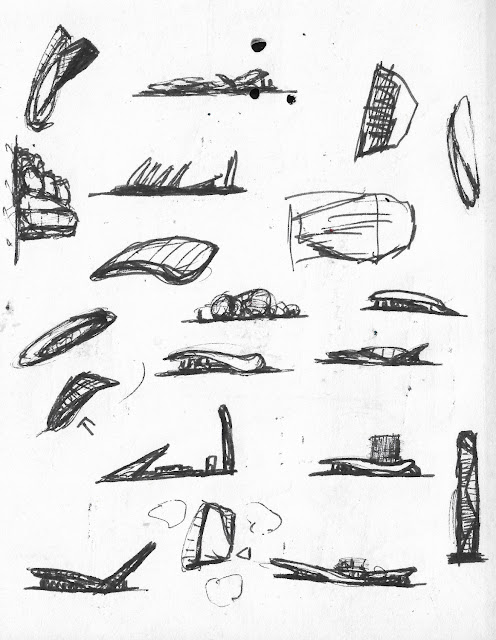-----------
Harnessing the Wind: Understanding Wind Loads and Their Impact on Structures - generated by AI
Introduction: In the realm of structural engineering, the forces of nature play a pivotal role in shaping the design and stability of buildings. Among these forces, wind loads stand out as a critical consideration, demanding careful analysis and design to ensure the safety and integrity of structures. This article delves into the complexities of wind loads, exploring their sources, effects on buildings, and the engineering strategies employed to navigate this invisible force.
1. Origins of Wind Loads: Wind loads originate from the dynamic interactions between the Earth's atmosphere and its surroundings. Winds are caused by the uneven heating of the Earth's surface by the sun, resulting in air movements that vary in speed and direction. The force exerted by these winds on structures is known as wind load.
2. Factors Influencing Wind Loads: Several factors contribute to the variability of wind loads, including the geographical location of a structure, local topography, surrounding buildings, and the structure's own height and shape. Wind loads are also influenced by the building's exposure category, which categorizes its susceptibility to wind from different directions.
3. Design Wind Speed: Engineers use design wind speed as a fundamental parameter in assessing wind loads. This speed is determined based on statistical data and is usually expressed as a three-second gust wind speed. The design wind speed is essential for calculating the external pressures that act on a structure.
4. Components of Wind Loads: Wind loads consist of two primary components: windward forces and leeward forces. Windward forces result from the direct impact of wind on the face of the structure facing the wind, while leeward forces arise due to the suction effect on the opposite side. Lateral forces and uplift forces are critical considerations in designing structures to resist wind loads.
5. Aerodynamic Shapes and Wind Response: The shape of a building significantly influences its response to wind loads. Aerodynamic shapes, such as streamlined and tapered designs, can minimize wind resistance and reduce wind-induced vibrations. Engineers utilize wind tunnel testing and computational fluid dynamics (CFD) simulations to study a building's response to wind and optimize its form accordingly.
6. Tall Buildings and Wind Effects: Tall structures, such as skyscrapers, face unique challenges in dealing with wind loads. As buildings rise above the surrounding environment, they can experience increased wind speeds and dynamic wind effects. Tuned mass dampers and wind bracing systems are commonly employed to mitigate vibrations and enhance stability in tall structures.
7. Wind Load Codes and Standards: The American Society of Civil Engineers (ASCE) and other international organizations provide comprehensive guidelines for calculating and designing for wind loads. Wind load codes specify methods for determining wind pressures on various building components, ensuring that structures are built to withstand the forces they will encounter in their specific locations.
8. Wind-Resistant Construction Materials: The selection of construction materials also plays a crucial role in mitigating the impact of wind loads. High-strength materials, such as reinforced concrete and steel, are commonly used to enhance the structural integrity of buildings in areas prone to strong winds.
9. Hurricanes and Cyclones: Regions prone to hurricanes and cyclones face particularly formidable wind challenges. Structures in these areas must adhere to stringent design standards to withstand the extreme wind speeds and potential storm surges associated with these natural phenomena. Hurricane-resistant glass, reinforced roofs, and secure foundations are common features in buildings designed for such environments.
10. Future Challenges and Innovations: With the increasing frequency and intensity of extreme weather events attributed to climate change, the field of wind engineering faces ongoing challenges. Engineers are exploring innovative technologies, such as smart materials and advanced modeling techniques, to enhance the resilience of structures against unpredictable wind loads in the future.
Conclusion: Wind loads represent a dynamic and formidable force that shapes the landscape of structural engineering. The art and science of designing structures to withstand these forces require a deep understanding of aerodynamics, material science, and geographical context. As architects and engineers continue to push the boundaries of design, the mitigation of wind loads will remain a central consideration, ensuring that buildings not only stand as aesthetic and functional marvels but also as resilient structures capable of weathering the invisible forces that nature may unleash.
--------------------
Below are some sketches, art and basic renders.
















--------------------
Each month, I spend a lot of time in order to keep the blog going , design and publish new sketches. For 4 years I published sketches for free creating the biggest collection of this kind of architectural sketches on the web. It has remained free and ad-free and alive thanks to support from viewers. I have no staff, I keep alone myself this blog. If this blog and these sketches have made your own life easier or help your creativity, maybe giving you new ideas, please consider aiding its sustenance with a donation. Your support makes all the difference.
All the sketches and art on this blog and Pinterest are for sale, and can be used after agreement with me.
Thank you,
Bozelos Panagiotis - Civil engineer - Architect
BLOG: www.architectsketch.blogspot.com
PINTEREST (sketches): https://gr.pinterest.com/bozelos/sketches-and-plans/
PINTEREST ART: https://gr.pinterest.com/bozelos/bozelos-panagiotis-art/
Don't hessitate to communicate with me for anything you want.
Contact info:
bozpan13@gmail.com
bozpan@protonmail.com
DONATE ME : Donate to Panagiotis Bozelos
DONATE ME (ETH): 0x0f15172ab16d89ca3f5dbd21755fd3e0e828c776
Buy art: Buy art as NFTs
---------------------------
bozelos @bozelos #bozelos
#architectsjournal #buildingdesign #sell #art #civilengineeringdesign #civilengineers #sketching #sketch #sketches #constructioncompany #civilengineering #oilindustry #dubai #qatar #uae #recruitmentagency #recruitmentconsultant #recruitment solutions #recruitement #recruitment services #civilengineering #worker #recruitment #energyindustry #recruiters #oilandgascompanies #recruitmentconsultants #recruitmentnews #oilandgasindustry #architecture #civilconstruction #civilengineer #constructionjobs #art #abstract #sellercentral #selrsagent #sellers #sellersmarket #buyersmarket #buyers #buyersguide #collectors #collections #collectivites
#nft #nftart #nftcommunity #nftartist #nftcollector





























































